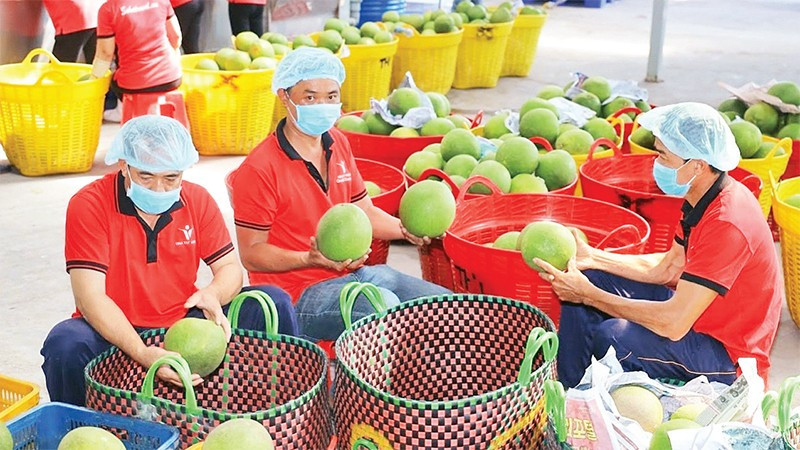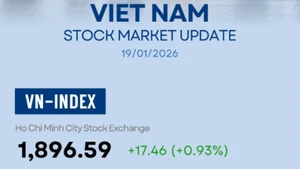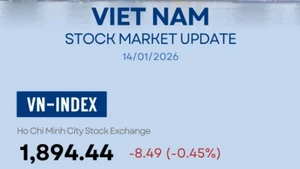However, not all items recorded high growth in the Chinese market. In addition to vegetables and dried cassava chips achieving impressive growth, seafood and coffee have been falling in this large market, requiring timely solutions to increase turnover in the near future.
Intertwined increase and decrease
According to statistics by the General Department of Customs, in the first four months of 2023, fruit and vegetable exports to the Chinese market reached 804.646 million USD, an increase of nearly 28% over the same period last year and accounting for 58.67% of the market share. General Secretary of the Vietnam Fruit and Vegetable Association Dang Phuc Nguyen said the increase in fruit and vegetable exports to the Chinese market was partly because in April, many border gates between Vietnam and China increased their daily operating hours to receive trucks. This showed that the demand from the Chinese market has been huge after a long period of decline, due to the impact of the COVID-19 pandemic.
The first three months of the year are not the main season for Vietnamese durian, so exports are still moderate. In April and May, the supply of durian began to increase and as a result, the exports of this item have recorded a strong increase. In addition, Vietnam officially exported sweet potatoes to the Chinese market, creating momentum for the growth of this industry. Specifically, the General Administration of Customs approved and granted codes for 70 growing areas and 13 sweet potato packing establishments eligible for official exports.
In addition to vegetables and fruits, dried cassava chips are one of the items reporting an increase in export turnover in the Chinese market over the past four months, with an export volume of 411,840 tonnes, earning 18.75 million USD, up 17.9% in volume and 11.2% in value over the same period in 2022, accounting for 90.31% of the country's total exports of dried cassava chips.
However, in the field of seafood exports, exports to the Chinese market have been falling sharply. Generally, in the first four months of 2023, Vietnam's seafood exports to the Chinese market reached 363.28 million USD, down 31.95% over the first four months of 2022. According to statistics from the General Department of Customs, Vietnam's coffee exports to China reached 13,420 tonnes, worth 40.38 million USD in the first four months of this year, a year-on-year decrease of 7.4% in volume and 9.3% in value.
In particular, the average export price of Vietnamese coffee to China reached 2,940 USD per tonne in April 2023, down 1.5% compared to March and 11.3% over April 2022. In the first four months of this year, the average export price of coffee to the Chinese market reached 3,006 USD per tonne, down 2.1% over the same period last year. Vietnam's total coffee market share for China's import volume decreased from 23.96% in the first quarter of 2022 to 13.9% in the first quarter of 2023. Statistics also showed that the export turnover of processed coffee to China reached 24.23 million USD in the first four months of this year, down 16.6% over the same period in 2022. Besides, Vietnam's pepper exports have still been under pressure due to low consumer demand. Vietnam's total pepper market share in China's imports decreased from 39.36% in the first quarter of 2022 to 29.75% in the first quarter of 2023.
Good products for right demand
To increase export turnover to the Chinese market, agricultural products need to have good quality to meet the needs of consumers. According to the Vietnam Trade Promotion Agency under the Ministry of Industry and Trade, these are two important requirements to promote fruit and vegetable exports to China. For example, dragon fruit, one of the main products exported to China, in addition to the requirements on quality, food safety and hygiene as prescribed, export businesses need to pay greater attention to this market’s demand in each period.
Although China is the world's largest dragon fruit importer, since 2015, the country’s import turnover has tended to slow down and decrease, due to the development of the domestic dragon fruit production area, which can meet more of the consumers’ demand. Therefore, to maintain and continue to grow dragon fruit exports, producers and businesses must create greater competitive advantages in terms of price, sweetness and colours for products. Also with potential durian products, China has been expanding the exploitation from many sources with different modes of transportation. Therefore, if Vietnam wants to dominate the market, it is crucial to improve quality, reduce costs and maintain product reputation.
For the seafood sector, the Vietnam Association of Seafood Exporters and Producers (VASEP) Nguyen Hoai Nam said, during the 2018-2022 period, the Vietnam-China seafood trade saw the strongest growth among the main markets. China is currently the second-largest seafood import market in Vietnam, following the US. The major seafood products of Vietnam exported to China are shrimp, crab, salmon, squid, cod fish and tra fish (pangasius hypophthalmus). In recent times, due to the decrease in exports of these two items, the overall seafood export turnover to China has decreased.
According to the VASEP, besides items with a decrease in turnover, dried anchovies exported to China are gaining great attraction, with an increase of 50% in the first quarter of 2023. Many other products have a strong increase in export value such as dried shrimp, yellow stripe scad and frozen halibut. This is also a suggestion for expanding export products to offset the turnover of enterprises.
















